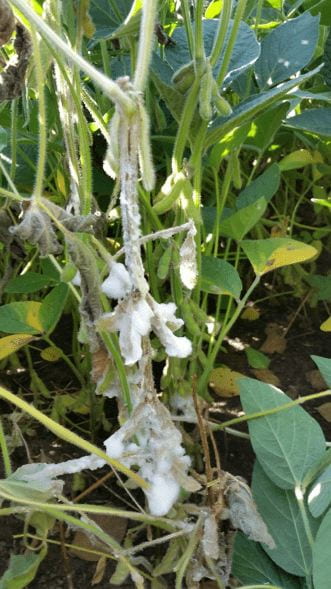
Mature fields of grain crops moving in the wind is a lovely sight. Having admired the beauty of ‘cereal rye’ in a field, I asked NYSIPM Integrated Weed Management Specialist Dr. Bryan Brown if rye has been part of successful weed suppression efforts.
The answer is yes, but even better, there’s anti-fungal benefits too.
Bryan shared this link to a 2019 published research paper for Renewable Agriculture and Food Systems. Rolled-crimped cereal rye residue suppresses white mod in no-till soybean and dry bean.
Few of us are weed scientists, but we value successes that reduce pesticide use and labor costs. In layman’s terms, planting soybeans after a crop of cereal rye means growers have a mulch in place (easier than bringing in straw). Decomposing rye steals nitrogen from the soil. Bad news for hungry weeds, but soybeans, like other legumes, fix their own nitrogen from the air. But there’s more.

Four key Cornell researchers, Sarah Pethybridge, Bryan Brown, Julie Kikkert, and Matthew Ryan, ran a no-till soybean trial during the 2016-2017 field seasons. Winter annual cover crops (crops that grow robustly enough to reduce weed sprouting and success) are knocked down in springtime with a mechanical ‘roller-crimper’. Crimping kills the stalks.
In this case, soybeans and dry beans were then planted directly—without soil cultivation—into the crimped and rolled cereal rye cover crop field

Why ‘no-till’? According to Cornell’s Organic program, “Overreliance on soil tillage and cultivation in soybean production can degrade soil health. Although often effective at reducing weed competition and associated yield losses, moldboard plowing and interrow cultivation are also very time consuming. Such practices can also leave soil vulnerable to soil erosion from heavy rain events, which have increased in frequency in New York.”

No till is often seen as a way to reduce germination of weed seeds. In the case, reduced germination of White Mold’s sclerotia occurred because they aren’t brought up to the surface through cultivation.
White Mold Life Cycle – try to keep up… It’s an endless cycle so we’ll start in the winter when things are slow. White mold disease, Sclerotinia sclerotiorum, survives the winter as sclerotia, a hardened fungal pellet. Sclerotia are long lived and survive in the soil. In spring, sclerotia wake up and, where they’re near the soil surface, germinate via little cup-like growths that form and spew ascopores (microscopic spores) into the air. Ascopores land on blossoms and infect the plants. If conditions are right, sclerotia may also skip spore production and germinate directly in the soil with mycelium infecting nearby plant stems. Either way the fungal disease spreads through the plant and neighboring plants, showing up as lesions and wilting. White mold gets its name from that white fluffy mycelia that may be seen on stems in the crop canopy. Later in the season, mycelia harden off into sclerotia to prepare for another cycle through the winter.
In these research trials, overall biomass of soybean crop was lowered (the dry bean biomass was greater in the rye), but the actual amount of harvested beans was higher due to reduced loss from white mold.

Traditionally, the only real ‘tool’ against white mold was fungicides. But timing, rates, density of crop canopy, and fungicide-resistance meant results could vary. And, for organic farmers, the options were very limited.
Why did this cover crop reduce this disease? The crimped rye cover crop reduced germination of sclerotia and therefore reduced spores. Researchers also felt this could exhaust inoculum in the soil therefore reducing disease in subsequent crops. But disease pressure on crops is always a combination of what’s surviving in the soil or on plant material, agricultural methods used by the grower and weather. Only some of that can be controlled.
As a weed fighter, rolled-crimped cereal rye seems to reduce or manage populations of herbicide-resistant weeds in trials by other researchers. More steps forward for reduced pesticide use! Its use as a cover crop works the way other mulches work–as a barrier for weeds to have to push through. Mulch shades the ground, reducing the number of weeds that germinate, since many have a germination response based on sunlight.
No till cover crops are not the answer for everything, but in this case, researchers found it gave a one-two punch against weeds and diseases!
Thanks for sharing this success with us, Bryan.
